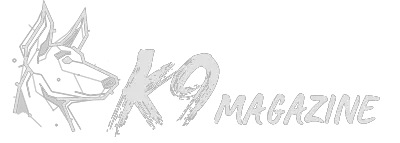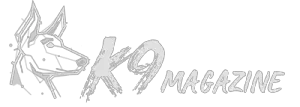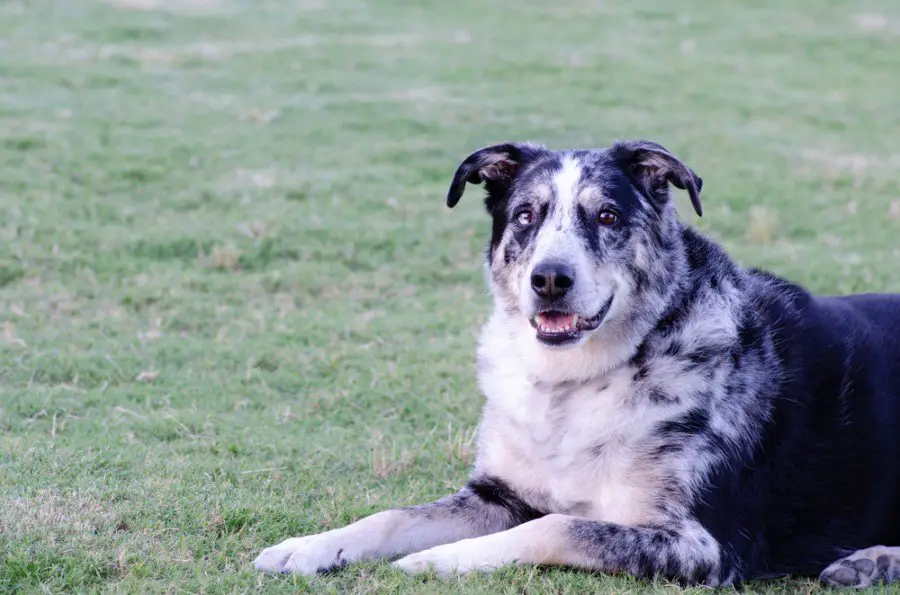Australian Shepherd German Shepherd Cross Hybrid Mix Dog Breed Guide
We all know German Shepherds from the narcotic enforcement raids and other military missions that we often see in the news from time to time. We also think of German Shepherds as ferocious protectors who won’t bat eyelids even at the impendency of a stray bullet.
German Shepherd dogs can do many things; they only require a professional or experienced teacher to tap into their exceptional intelligence.
On the other hand, Australian Shepherds possess average intelligence, and like their German Shepherd counterparts, exhibit robustness and muscle flexibility. Some critics even assert that the Aussie Shepherds can adequately work as herding hounds – no doubt, they can.
When a breeder crosses a German Shepherd with an Australian Shepherd, the resulting offspring becomes a German Shepherd Australian Shepherd hybrid.
The AKC avers that the crossbreeding involves mixing two of the most renowned herding breeds. When pitted against each other, Shepherds and Aussies have lots of distinctions in their physical appearance, historical backgrounds, and behavioral traits.
Nonetheless, these two species share many more similarities than differences, such as their preferred companionship as home pets.
The crossbreeding between Aussies and German Shepherds will produce a unique hybrid with remarkable smartness, affection, an easy to train character, friendliness, athleticism, and improved health than the parents.
This piece discusses Australian and German Shepherds’ nature, their uniqueness, grooming aspects, training requirements, feeding recommendations, and overall maintenance.
The Uniqueness of the Herding Order
Some dog enthusiasts prefer the unparalleled energy of marshaling dogs, while others can hardly manage the species’ intensity. All in all, most keepers will undoubtedly fall in love with their dynamic character.
For dogs to categorically fall into the herding cluster, they require four major characteristics; exceptional intelligence, agility or flexibility, remarkable speed, and a unique physical and movement appeal.
Herding dogs make their owners proud, regardless of whether you assign them to work in the fields or win a competition in an exhibition.
Historically, German Shepherds in Germany gained their fame as wonderful herding breeds because they gripped and moved sheep instead of biting and hurting them. Back then, in the German slopes, German Shepherds assumed herding as their primary profession.
However, sometime in the late 19th Century, the declining need for marshaling dogs almost caused their extinction.
Stephanitz, a European farmer, raised and nurtured GSDs for thirty-five years. The farmer also trained the Shepherds to work diligently and in versatile scenarios.
Renowned Australian Shepherd breeders suggest that North American breeders developed Aussie Shepherds by mating dogs originally owned by Basque immigrants and those owned by Australian sheepherders.
After migrating from the Pyrenees highlands located on France and Spain’s border, the immigrants moved into the US.
Aussie Shepherd ancestors come from a variety of herding dogs in England, Spain, and Australia. They include Spanish Shepherds, English Shepherds, Tiger hounds, and Australian Koolies.
Despite the close relationship between Aussies and Border collies, early critical works and research do not reveal Collies’ possible influence on Aussies’ bloodlines.
The herding cluster contributes a great deal to the versatility, efficiency, power, and agility of Aussies and German Shepherds. Therefore, hybrids will inherit the favorable herding traits of their parents.
Common personality traits that Aussie-Shepherd hybrids inherit
A German Australian Mix weighs between fifty and seventy-five pounds and measures between twenty and twenty-three inches high. The hybrid’s overall height will measure anywhere between the 18-inch shortest Australian Shepherd and the tallest 26-inch GSD.
Aussie Shepherd crossbreeds can inherit any personality from the Aussie or Shepherd. The mix’s muzzle might resemble the slightly longer one of the GSD or take after an Australian Shepherd’s round head.
Crosses can also display different walking traits, depending on the predominantly inherited style from the parents.
German Shepherds use their long legs to stride and cover more vast grounds with fewer steps. Aussies, on the other hand, make quick short bounces, covering shorter floors but in fast motion.
A German Shepherd’s tail looks strong and long. Aussie tails are often full-length and curled overhead their backs or typically bow. Crossbreeds will often exhibit lush and long tails.
Aussie German Shepherds will possess moderately more elongate bodies. However, the crossbreeds’ bodies will run shorter from their hips to the shoulders than purebred Alsatians. The Australian German Shepherd hybrid’s eyes can vary in coloration – from blue to hazel to brown.
The cross’s ears do not affirm upright on their heads like in GSDs despite their unusually larger size. Aussies’ airfoils slightly bend forward; therefore, their ears will slightly flop to their jawbone sides.
Overall, the Aussie Shepherd mix inherits some attractive traits from both progenitors. The hybrid can perfectly resemble a GSD in physical outlook but take after the Aussie parent in specific personality attributes.
Besides the character qualities, you’ll also notice fur edges protruding from the ears of most Australian Shepherd crossbreeds.
Coat Colorations
German Shepherds
- Solid colors (red, blue, or tan) and the black color – black coats cover significant GSD body parts.
The black coloration often occurs in a saddleback variation all over the back and as a dark mask covering the muzzle and face.
- Sable – Sable Shepherds will feature unique agouti patterns characterized by their hairs’ confederation with other multitudinous colorations.
Wolves’ bodies exemplarily display the agouti archetype; their striped colors include red, brown, and gray.
- Pure solid colors – Solid colorations include white, liver, black, and silver.
Australian Shepherds
- Solid complexions – Solid-colored Shepherds are usually black or red.
- Merle Shepherds – Often blue or red. A Merle complexion will feature a speckling effect or spotting colors in a stereotypic pattern.
- Bi-color Shepherds – They are white and red or white and black.
- Tricolor Shepherds – black or red; a Tricolor Shepherd reserves a tan and white coloration in a threadbare pattern.
- Tan and black or tan and red.
Australian German Shepherds
- Tan and black coatings or tan and red furs cover some Aussie Shepherd bodies.
- Solid shades – Aussie German Shepherd crossbreeds can possess black, blue, red, cream, or pure tan colors.
- There are Brindle or particolored hybrids.
- Bicolor mixes – the crossbreeds will feature either white and black coats or white and red fur.
- Tricolor (resembling Aussie Shepherds) – Tricolor Shepherds feature White and black coatings with brown spots.
- Merle – Their coats are commonly black.
- Some Aussies have White coatings with crimson or black spotting or speckled patterns.
You’ll find new colorations such as brindle in Australian Shepherd crosses that you wouldn’t find in their parents. Other unusual coating shades include gray patches and silver colors on tricolor breeds.
The designed pups present an unpredictable variation in coating colors and give breeders and designer enthusiasts an illimitable opportunity to reproduce rare colors and nurture exceptional Aussie Shepherd hybrid puppies.
Unlike their Shepherd progenitors, who often bear the tan and black colors, the crossbreeds will most times display their predominantly white and black coats. You’ll usually get a bicolor puppy, even in the uncertainty of one of the parents’ coat colors.
How to Properly Groom your Australian Shepherd Mix
The hybrid’s fur length can vary. Some Mixes display dense and averagely long fur with sizeable undercoats. Other crosses possess shorter upper coats with edges of tall hair around their visages and tails, strikingly resembling their Australian Shepherd progenitor traits.
You can brush your Aussie Shepherd cross at least once each week. However, we strongly recommend brushing the hybrid daily to minimize excessive shedding and rolling hairs around the house.
It would help if you bathed the dog infrequently, particularly when they roll and get dirty in muddy puddles. Frequent bathing can strip off essential oils from the pet’s skin, causing dryness and irritation.
Examine the dog’s ear canals regularly for signs of infection and trim their nails at least once every month to prevent splintering and excessive nail growth, which can cause the dog pain while walking.
A Watchdog and Protector
GSDs prioritize the wellbeing of their kin and thus will selflessly defend and protect them ruthlessly. Chances of a German Shepherd biting a stranger will, of course, vary from one Shepherd to another depending on their training levels, threat, and awareness disposition.
Nonetheless, any trespasser will think twice before invading a home guarded by a German Shepherd – their reputation and intimidating poise will suffice in warding off potential invaders.
Australian Shepherds will protect their homes just as readily as they would if guarding their herds. An Aussie will ferociously bark to ward off interlopers but will not attack violently by biting.
The German Shepherd Aussie Mix moderates GSDs’ relentless guarding intuition and uplifts the Australian Shepherd’s protectiveness.
Sometimes you may end up with a not-so-scary guarding Shepherd with the Mix because of uncertainty in the most predominantly inherited characteristics.
Besides, the hybrids don’t grow as big as German Shepherds, and they might decide not to snap at dangerous intruders if they persist with invasion.
All in all, Australian Shepherd Mixes make the perfect alarmists because of their vicious barking. Scientifically, invaders will most likely abandon their missions if they hear the fierce barking of the resident dog.
Training your Aussie Shepherd Mix
Effectively coaching a dog requires exceptional intelligence from the species. Currently, German Shepherds hold the third slot in the most intelligent and obedient dogs globally. Australian Shepherds, however, rank way lower in the forties out of a total of 137 breeds.
Nonetheless, Aussie Shepherd crosses will display exceptional smartness and quickly pick up skills and instructions from their trainers and masters.
Enthusiasts who nurture intelligent dogs, especially those descending from a working lineage, should continuously keep them busy to prevent boredom. Bored dogs can destroy property around their homes or use their idle energy and time to loiter away or harm other pets.
We recommend owners to indulge their dogs in intense stimulation exercises through rigorous and tiring exercise routines, regular training, and interactive games to eliminate the risk of your hybrid acting out or destroying property.
When training your hybrids, always keep in mind that their German and Aussie Shepherd parents can transfer some of their bossiness or pushiness traits to the pup, resulting in a puppy who attempts to push you in everything.
Besides, Aussie Shepherds sometimes parry their desire to impress with endeavoring to tackle problems and find solutions themselves.
In their early life, German Shepherd crosses will most likely falter in obeying instructions. If not well trained, the little cross could grow into a skillful escape maestro.
We recommend that you train your German Aussie Shepherd from their early life to raise an obedient and friendly companion. Neglecting early training protocols can result in a hyperactive, uncontrollable, and an extremely nippy Shepherd mix.
Despite their small stature, Australian Shepherd hybrids reserve exceptional strength and remarkable speed.
Recommended Exercise Schedules
Both GSDs and Aussie Shepherds prefer to move around frequently – they don’t like sitting or lying about on sofas. Alsatians can walk for many kilometers without showing signs of fatigue. Aussies will hardly tire as well; they make perfect jogging companions.
Accompanying your Australian Shepherd Mix for thirty to forty-five minutes of jogging or running each day will keep them at their peak activeness.
Before the top of the hour and the count of an overall ninety minutes, consider incorporating training lessons, leash guiding, and other systematic activities. Routine exercises present an opportunity for owners and their dogs to enjoy joint training sessions that will benefit both sides.
Versatility and Purpose
GSDs can still effectively guard and herd sheep.
However, the evolution of a modern world diversified the species’ roles further. They now work versatile in military operations, patrol enforcement, explosives detection, narcotics, and rescue missions, leading the blind, show rings, movies, and rehabilitation.
An Australian Shepherd does not outsmart the GSDs when it comes to versatility. However, they can still correctly herd sheep, search for and rescue people, help the physically incapacitated, work in therapy and disaster management.
You’ll occasionally eyeball the Aussies on patrol squads as well as in movies.
Adult Australian Shepherd hybrids can accomplish anything. It would be best to consider Frisbee tournaments, designer breed exhibitions, herding tournaments, agility tests, fly-ball, obedience, jetty diving, and enticement coursing for the crosses.
Common Health Complications
Australian Shepherds live longer than German Shepherds because of their relatively small sizes. Aussies live between thirteen and fifteen years, while GSDs live between nine and twelve years.
Besides, Australian Shepherds profited from their owners’ onset unwillingness to register their breeds with the AKC. With the delay, the dogs avoided the complex conformational requisites that came with their membership at the time.
Breeders, who cultivated GSDs carried out their line-breeding and inbreeding carelessly. The reckless copulation resulted in a less potent gene streak that became more prone to hereditary and numerous health complications.
The possibly misguided conformation directives by regulatory institutions encouraged German Shepherd breeders to promulgate the sloping backsides and extremely stifled joints of exhibition dogs.
The following list includes health problems that Australian and German Shepherds may transfer to their progeny:
Dysplasia
Dysplasia frequently affects the hip or elbow joints by denaturing the ball and socket nodes’ regular and smooth fitting. The problem often occurs during the pup’s development into an adult and can cause arthritis if not treated in time.
Elbow complications affect GSDs more than Australian Shepherds. The joint problem also occurs during the pup’s development into adulthood.
Despite continuous research and progress in the scientific world, experts still can’t effectively eradicate dysplasia. Scientists find it particularly difficult to isolate the infection to a particular gene.
Besides, other environmental circumstances such as over-nutrition, obesity, fast growth, and overuse of the limbs during puppyhood prevent scientists from properly eliminating the complications.
Collie eye anomaly
The anomaly hinders the normal development of the puppy’s eyes. In extreme cases, an Australian German Shepherd mix with the Collie eye can develop permanent blindness.
Hemophilia
The absence of beneficial clotting agents will cause unnecessary and prolonged bleeding and affect the immediate healing of wounds. The problem often occurs in German Shepherds.
Female GSDs carry the disease but show no signs (asymptomatic or symptomless carriers), while male Shepherds exhibit severe symptoms.
Coloboma
Signs and symptoms of Coloboma match the effects seen in the Collie anomaly. However, Coloboma only affects a specific eye segment and hinders its full development. You’ll find the infection more prevalent in Merle Shepherds.
Epilepsy
The convulsion disorder can arise from either progenitor because the affected parents can genetically transfer the complication.
Digestive issues
The absence of pancreatic catalysts in German Shepherds can result in their underdevelopment when their organs fail to digest foods.
Sensitivity to various medications
The phenomenon uniquely affects Aussies, Border collies, and Collies. The sensitivity can cause severe and life-threatening olfactory reactions when administering common medicines for anesthesia and deworming to your dog.
Overall, the Australian Shepherd Mix experiences fewer complications than those shared by the Aussies and GSDs. However, priority concerns include hemophilia, eye complications, and dysplasia.
We advise dog owners to administer medicines with caution, particularly when treating dogs with Aussie or Collie bloodlines.
Keeping the hybrid as a family pet
Australian German Shepherd crossbreeds require consistent training and exercise schedules and high upkeep costs to nurture them into good family companions.
Even though this Mix’s demanding lifestyle makes it hard for some dog owners to keep up, several other qualities suggest otherwise. A German Shepherd Australian cross can quickly get along with other pets if you train them at an early age to socialize.
The strong herding intuitions of GSDs and mainly Aussie Shepherds lead them into feeling the need to herd and guard people. Ensure you continually train and remind the cross not to nip at children’s heels or gather them at specific locations.
If you want to raise an Australian Shepherd mix effectively, we recommend that you socialize them with many different people and in different circumstances.
With proper socialization, the crossbreeds will act politely towards visitors and, over time, learn to differentiate them from intruders.
Wrapping Up
The benefits of acquiring and nurturing an Australian German Shepherd cross significantly outweigh the downsides. You’ll only require consistent coaching and positive teaching to instill the desirable character in your puppy.
Besides proper training, German Shepherd Australian hybrids need adequate nutrition, regular grooming, and frequent visits to the vet for checkups and medication.
The crosses can live up to fifteen years, provided their owners focus on the dog’s feeding and exercise routines.
Some mixed colors are hard and expensive to come by. Regardless, finding a healthy Aussie German pup requires pinpointing a trustworthy breeder who will provide all the necessary documentation on the puppy’s welfare.





